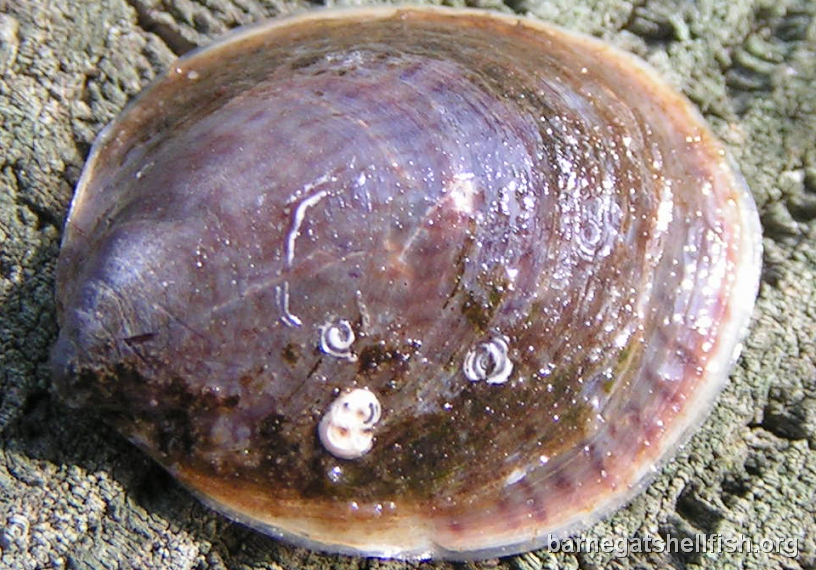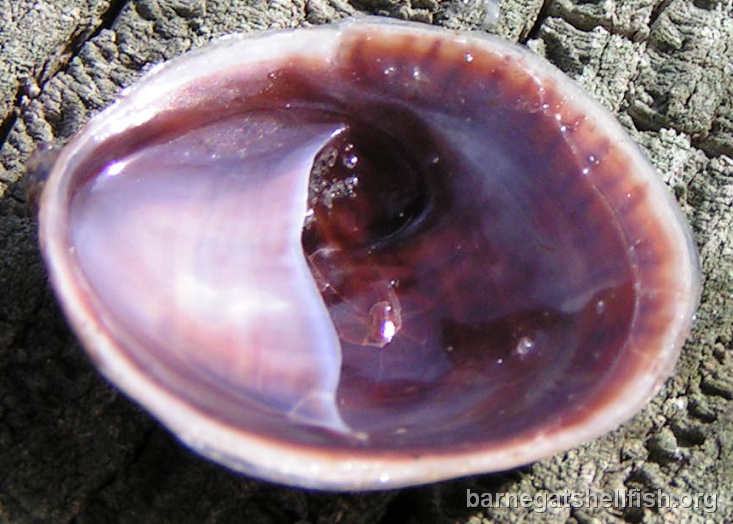Oyster drills feed mainly on bivalve mollusks, especially oysters. Muscles have relatively thin shells and can be penetrated more easily than clams, barnacles and other snails. Oyster drills themselves can become a victim of their own species.
When a drill finds a victim it grips onto the shell tightly with its foot and begins the drilling process. This involves not only scraping with the radula, but also an application of calcium-dissolving acid to help soften the shell and make the drilling easier.
This process is similar to moon snail predation but the size of the hole in the victim's shell is much smaller, more the size of a pinhole.




